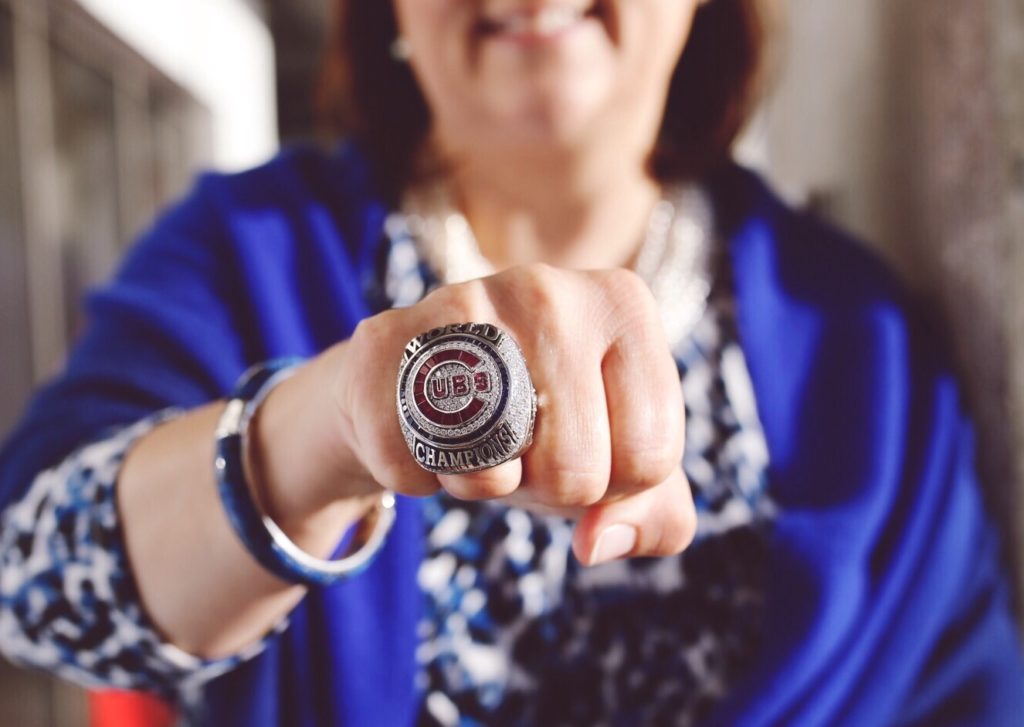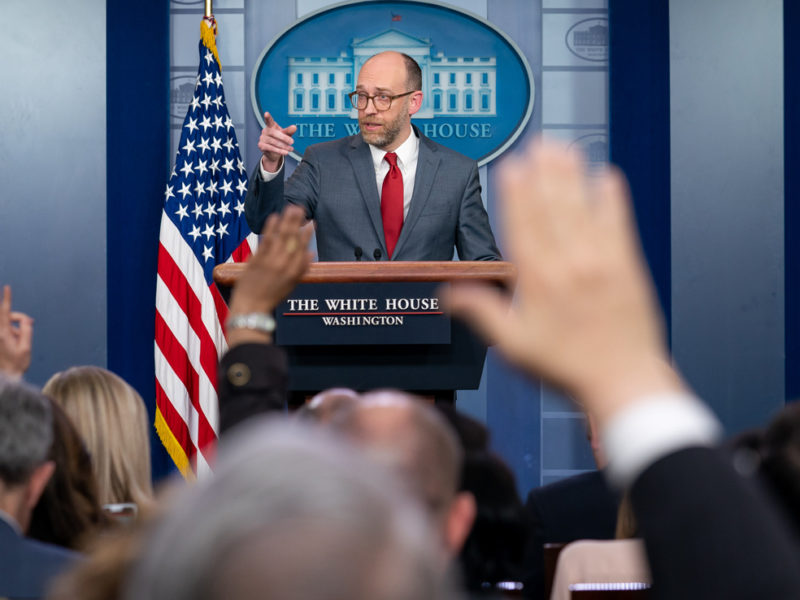
Cubs owners Tom Ricketts and Laura Ricketts on how public spaces engage communities
For years, the space across from Wrigley Field was unremarkable. There was a parking lot, often filled with construction trailers that served as office space for staff members of the Chicago Cubs. But after the Ricketts family acquired the team in 2009, they started making improvements, both on the field and off.
It was slow growth, but they were transparent about it, acknowledging that changes don’t just happen overnight. As the Cubs began shedding its veteran playing staff and bringing on young talent, the team was improving year-over-year. But renovations were taking place on the landmark that is Wrigley Field in a similar manner. The 1060 Project—a long-term initiative to spruce up Wrigley and its neighboring area—showed that the Ricketts were putting the same effort into their community as they had their World Series-winning baseball team.
When Chicago Ideas had a chance to sit down with Tom Ricketts, the Executive Chairman of the Chicago Cubs, and Laura Ricketts, a Director and Co-Owner of the Cubs as well as the Chairman of the Board for Chicago Cubs Charities, the pair were enthusiastic for what they feel the park adds to both Wrigley Field, and the surrounding neighborhood.
“One of the things we saw was that it was really difficult to have a complete experience with your family when you’re at a game at Wrigley,” said Tom, “There’s not much for kids to do. We don’t have much space.” While this was the impetus for the expansion, it runs in tandem to the work Laura has been doing heading up the Chicago Cubs Charities. This past Wednesday, at the Bricks and Ivy Ball, a charity auction that took place at Navy Pier, the Cubs raised $2.2 million, all of which is intended to be used to aid children and families across the city of Chicago.
With the Park at Wrigley, the Ricketts are using Wrigley’s landmark status as a way to embolden the community surrounding it. “There’s this special feeling and magic of the place itself. The goal is to really bring that out,” said Laura. Her hope is that, on game-days, the charity work can run in tandem to the action on the field. “Maybe having Clark the Cub out there during certain innings so kids can meet him, and maybe some of our Cubs on the Move—our fitness program—with the kids in the ballpark during the game.”
And while these initiatives add benefits to the Cubs’ brand, the proliferation of open, community-focused spaces have proven, time and again, to be a boon to neighborhoods. As The New York Times reported, in a neighborhood like Chicago’s Little Village, turning an illegal dump into a public park eliminated violent crime in the area. The Times also notes that investing in parks and public spaces often does more for a community than anti-violence initiatives, which is something that Bill Strickland, the President and CEO of Manchester Bidwell Corporation—a jobs training center and community arts program—has proven time and again.
As a past Chicago Ideas speaker, Strickland drove home the importance of giving communities meeting places—and other public utilities—and how they have, in cities across the United States, brought down crime and bolstered people of all ages. He recently launched the Chicago Center for Arts & Technology, which offers after-school programs for kids and vocational training for adults. It’s initiatives like this that Strickland has made his name on, and it’s something that can be seen in the Park at Wrigley, too.
In our chat with the Ricketts siblings, there’s a phrase Tom keeps coming back to, describing the Park at Wrigley as a “town square.” That idea exemplifies what the pair hope to bring to their neighborhood, offering youth-focused programs and other events to help bring the community together. Thus far, the Ricketts have already aligned with the Music Box Theatre to screen movies in the park, and the Old Town School of Folk Music’s Wiggleworms will be dropping by to encourage kids to get involved with music. “That’s the point of it,” said Laura, “To make it so that neighborhood partners and neighbors will make use of it. That’s the whole reason for it to exist.”
Yet like all initiatives of this ilk, the Park at Wrigley had its fair share of detractors. The Ricketts family built this public space with their own money—without assistance from the city of Chicago—with an initial proposal to keep the park open later, and sell alcohol until later as well, squashed by the city council. Since then, the family has struggled to make the park as accessible as initially intended. Their initial goal to have it open to the public every day wasn’t approved, meaning that, on days of baseball games or concerts, the plaza is only open to ticket holders.
Similarly, not all of their Wrigleyville neighbors were excited by the prospect of this new development. Many of the bars around Wrigley Field felt that the sale of alcohol on this plaza would hurt their businesses, with many also decrying that the expansion was more about commercialization than community, with terms like “Disneyland” tossed at the Park at Wrigley, and not in a flattering way. But talking to Tom and Laura, it’s easy to see that they understand this development has something to prove, and instead of shutting out the critiques, they continue to engage with them. It’s why hearing what people want out of the Park at Wrigley—as well as what should be avoided—remains tantamount to their business plans.
“It’s really to serve the community and see what they find most useful from it,” said Laura, with Tom adding that, “We’ll see how it gets used and, hopefully, we’ll get some great ideas out of the neighbors that come by and take advantage of it, and then just try to improve it.” It’s this focus on making the Park at Wrigley a public space that’s growing with its community—and open to its input—that shows the Ricketts are working not just to improve the Cubs, but their place in Chicago as well.






Angie G
Great article, David. As a long-time Wrigleyville resident, I can say that I had very high hopes for the Park at Wrigley, knowing that this area needed to change and grow and, frankly, become a safer, more desirable place during the off-season. Since it opened, I’ve used the park a couple of times a week already to hang out, work, meet with clients. I can’t wait to see the programming get going and I, for one, am VERY excited to have this in my community.